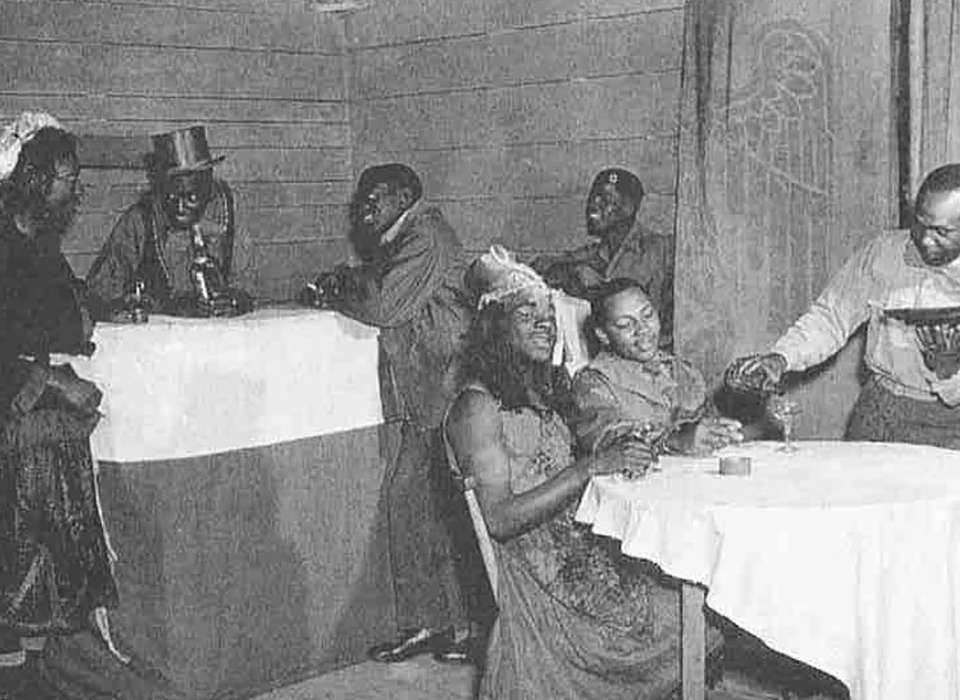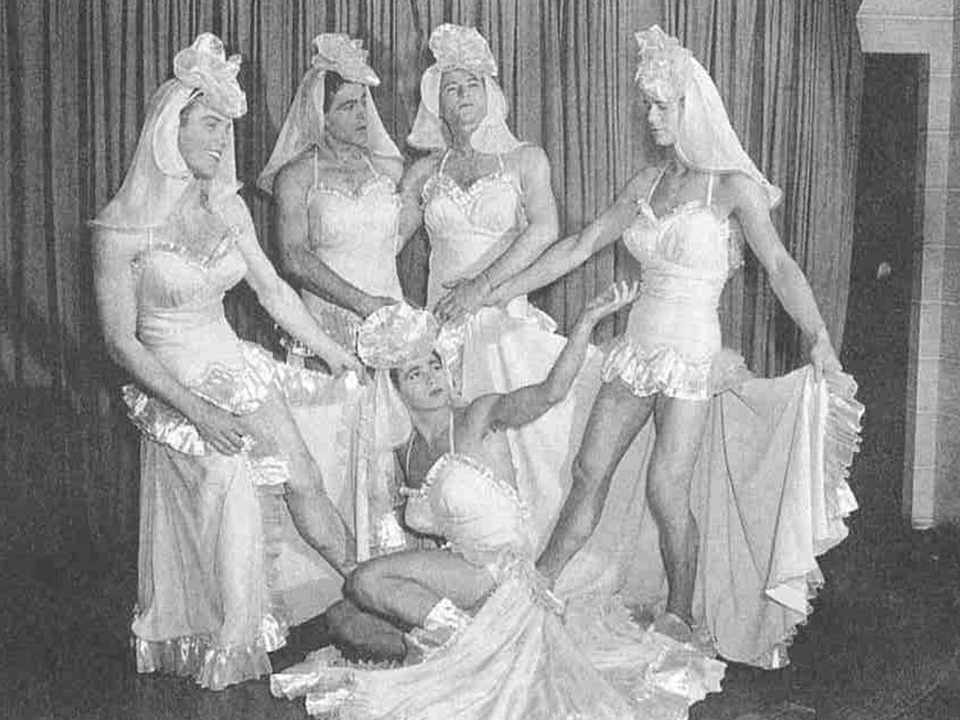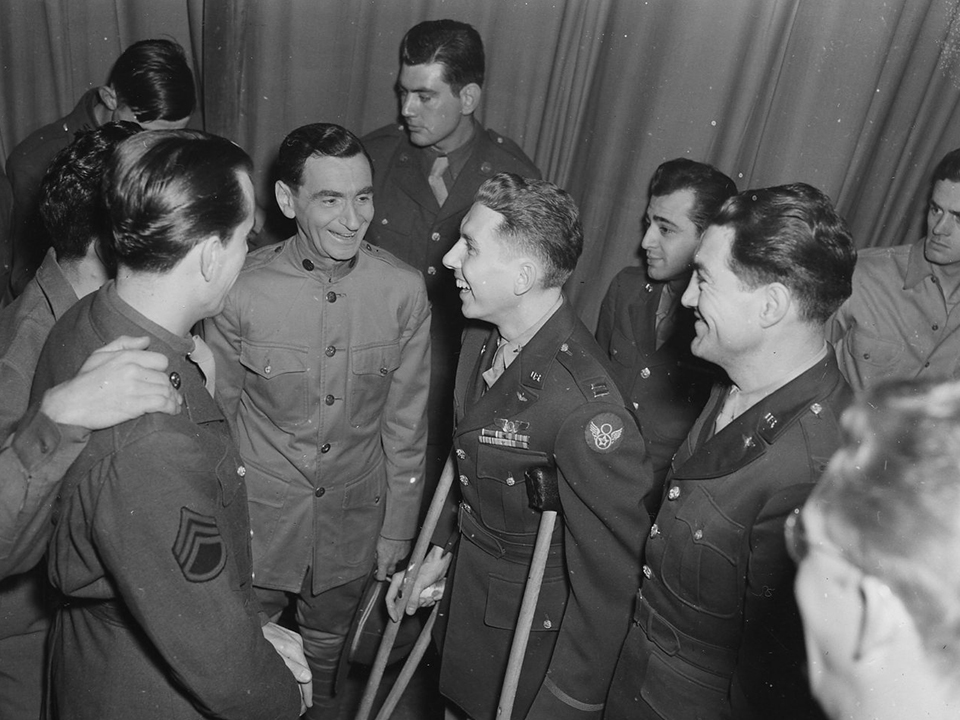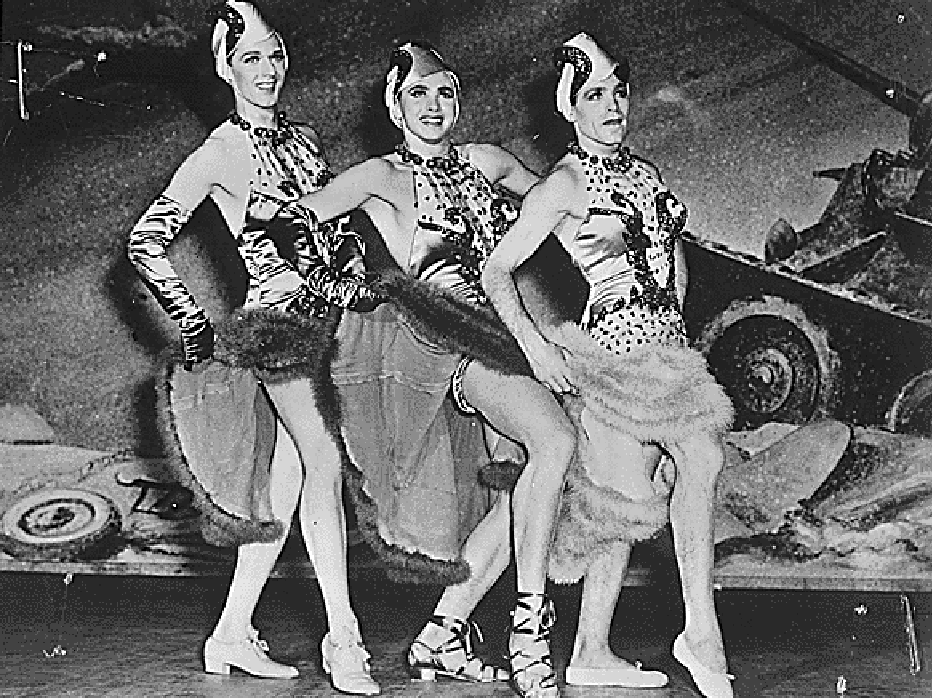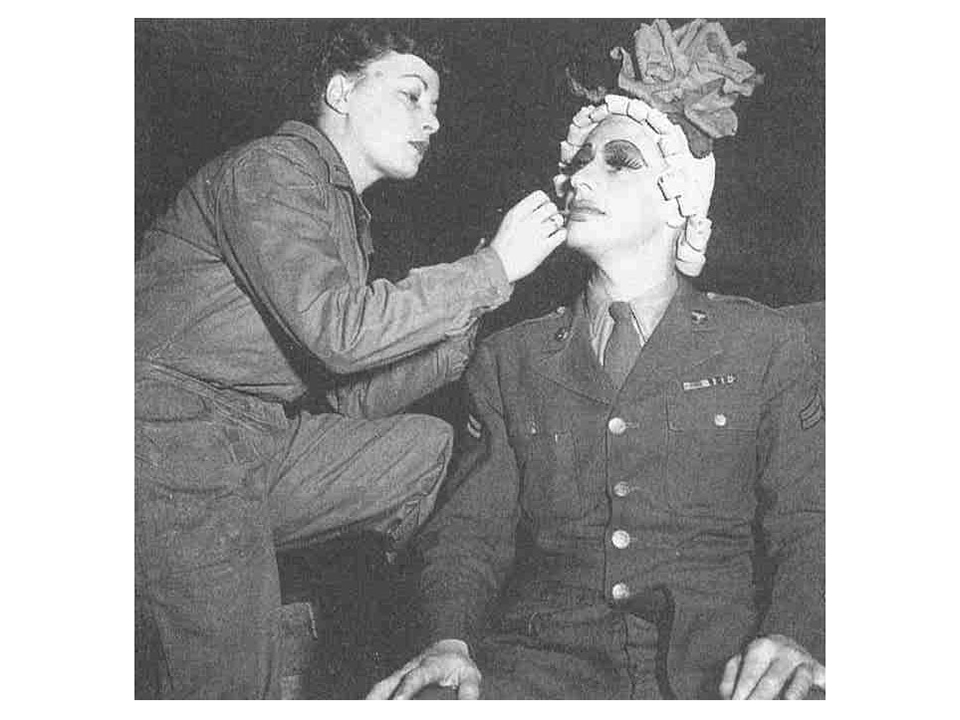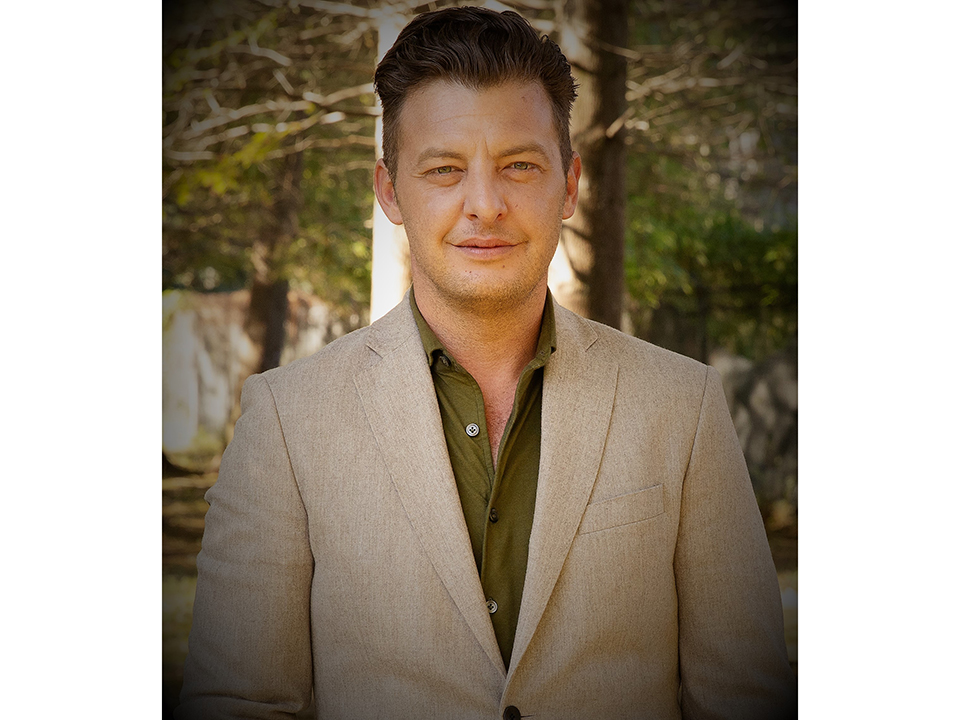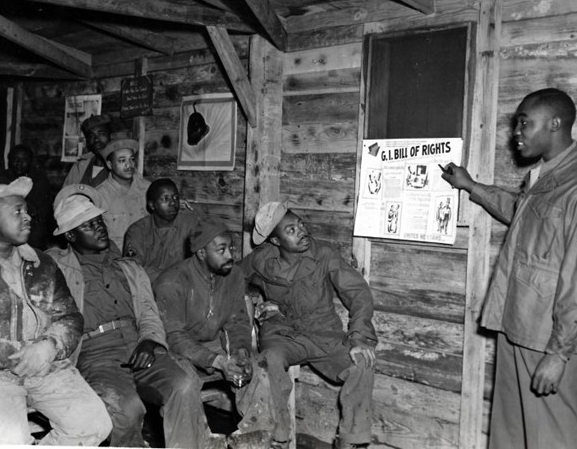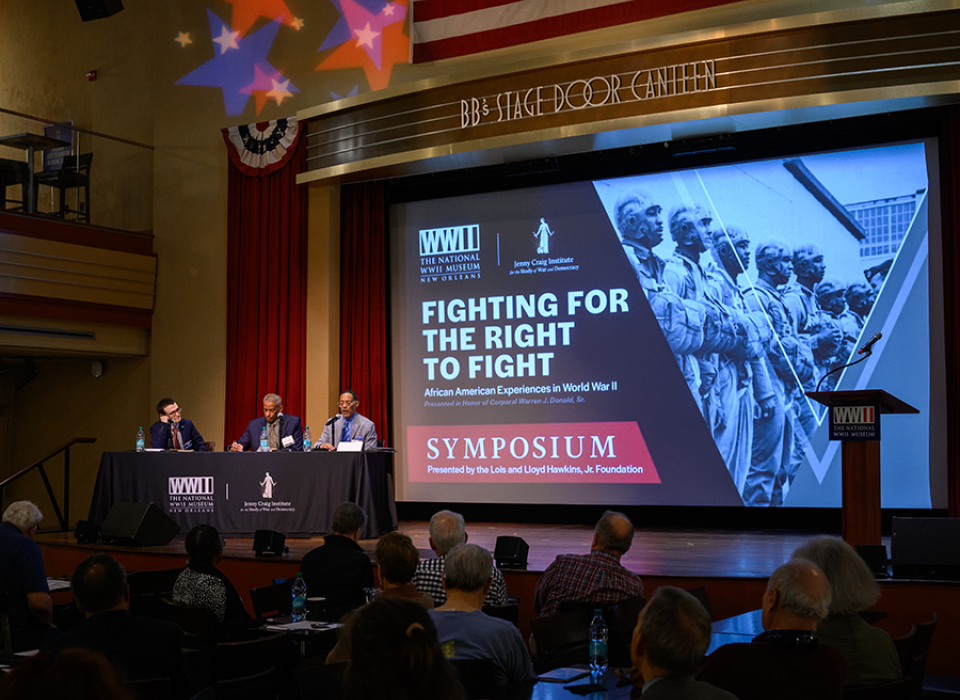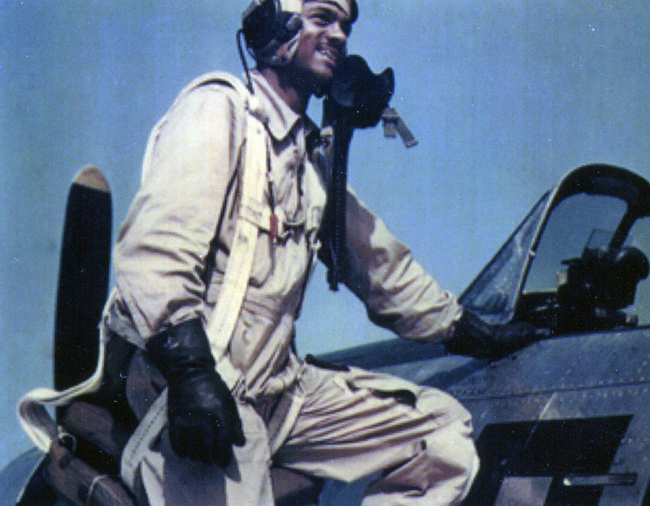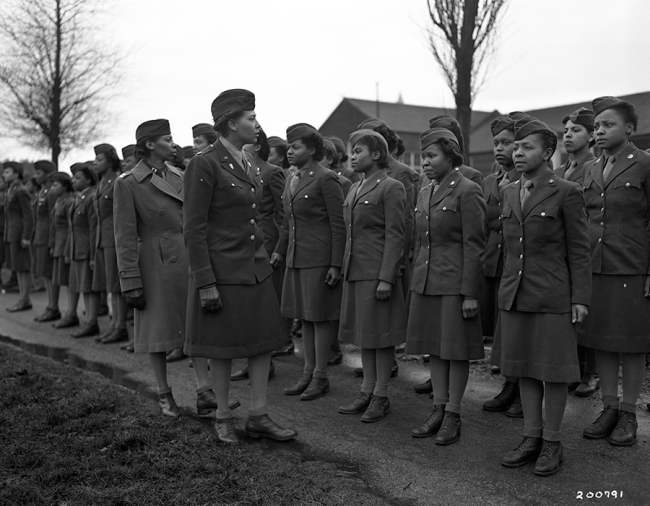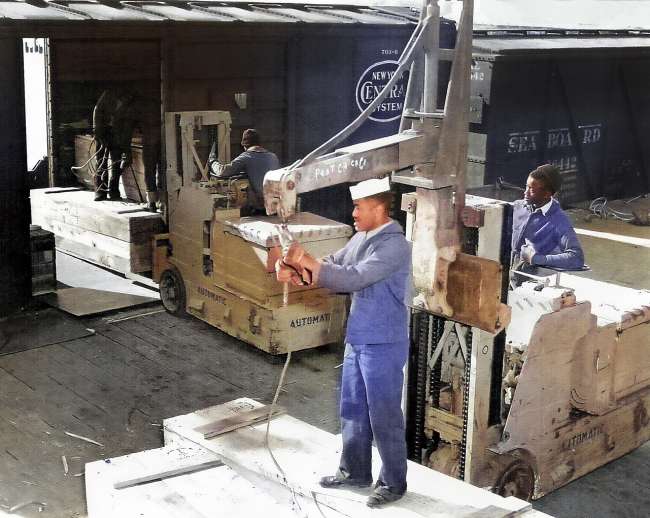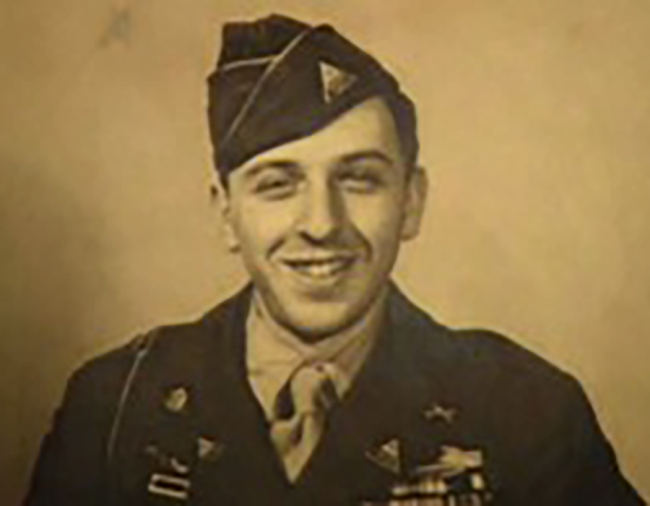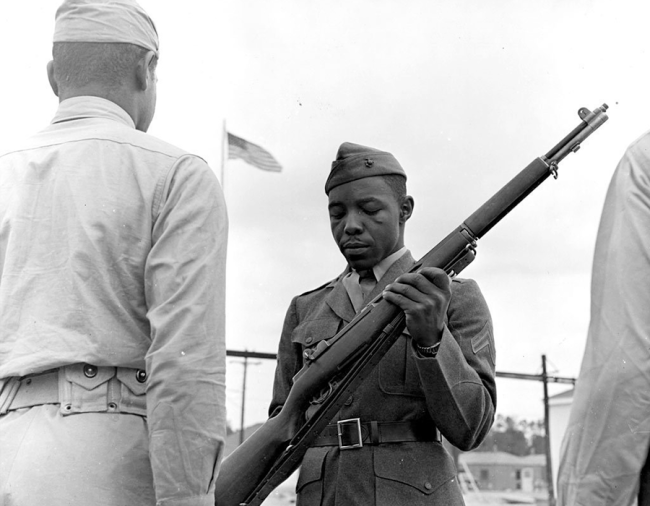Top Image: Jumping with Jodie, Army Signal Corps photographs, SC-140522, courtesy of the National Archives.
Early in World War II, the National Theater Conference lobbied to authorize soldier shows as “a necessity, not a frill.” By early 1942, approval was granted by leadership in Washington for the Special Services in concert with the United Service Organization (USO) and American Red Cross to begin soldier show productions to entertain the troops both on the homefront and abroad.
The Army Special Services produced, published, and distributed handbooks for soldier shows. These publications, known as Blueprint Specials, contained everything you would need to put on an approved and pre-scripted soldier show. Blueprint Specials for soldier shows even included dress making patterns and suggestions for material procurement. “Girly” show choreography was outlined in the publications to ensure that the GIs looked good in their highly choreographed “pony ballet” numbers. A pony ballet is one where groups of masculine looking GIs dress in tutus and perform ballet routines often wearing their army issued boots.
During World War II, Irving Berlin’s brilliance for creating popular soldier shows reappears with the production of This Is the Army. On the Fourth of July 1942, This Is the Army opened to a packed audience at New York’s Broadway Theater. This all-soldier cast show was a huge success with the audience raising money in support of the Army Emergency Relief Fund. Following a special performance of This Is the Army for President Roosevelt in Washington, DC, a reporter highlighted how the President was especially drawn to the striptease routine of a Gypsy Rose Lee impersonator.
The production went on to massive commercial success in the film version starring Ronald Reagan and George Murphy raising almost $10,000,000 for the relief fund’s efforts. There were essentially three types of drag performance that became commonplace in soldier shows during the WWII-era through the blueprint from This Is the Army. These performances included comedic routines, skilled feminine singers and dancers, and impersonators of female stars of the period.
This Is the Army and other “girly” soldier shows could have been criticized, especially considering that drag performance was hardly commonplace or accepted in American society during the WWII period. Wartime propaganda and media reviews helped to counter this potentially negative reaction by reframing the discussion on the wartime drag performers as normal male soldiers doing their duty to entertain their peers and promote good morale amongst the troops.
In fact, during the casting of the film version of This Is the Army, a reporter for Collier’s opined that a “dame must be dragged in” to audition for the roles the GIs had performed with ease on the stage. The film version of This Is the Army actors march off, at the end of the film, to join the soldiers fighting on the battlefront. This Hollywood propaganda reinforces the concept that although the actors might be entertaining, they are also American heroes who want to protect the country they love.
General Dwight D. Eisenhower is quoted as saying, “The USO has given an impressive demonstration of the way people in our country of different creeds, races and economic status can work together when the nation has dedicated itself to an all-out, integrated effort.” While the armed services were segregated, the shows were produced for both White and Black audiences. African American soldiers were treated to shows like Jumping with Jodie with all of the common elements of a soldier show present including the use of drag performers entertaining the segregated service overseas.
The first all-Black soldier show was produced a month after the Broadway opening of This Is the Army. Jumping with Jodie was produced by the soldiers of the 3966th Quartermaster Truck Company in Germany, which included several soldiers in drag in a Harlem nightclub number pictured above. It wasn’t until near the end of the war that some performances were racially integrated; however, even on the stage the presence of interracial relationships were not permitted.
Originally, the argument for female impersonation in soldier shows was related directly to the personnel needs of the period. There weren’t enough women to perform these roles, and the shows were integral to the wellbeing and morale of the soldiers and therefore necessary. However, by 1942-43 this was hardly the case as more and more women entered the armed forces. While women in the Women Accepted for Volunteer Emergency Service (WAVES) were allowed to perform with men and to tour in all-female cast soldier shows, the same was not true for the Women’s Army Corps (WACS). The idea of WACS performing for the troops was highly controversial to leadership. Colonel Oveta Culp Hobby was concerned that the WAC performers would be too sexually risque to perform for the all male audiences overseas. Colonel Hobby went even further issuing directives barring WACS from “singing and dancing in connection with any presentation.”
As the head of the Women’s Interest Section in the War Department’s Bureau of Public Relations, Hobby believed that the image of the WACS needed to be protected in order to gain greater acceptance by the military establishment and the public more generally. Although women were barred from appearing in these soldier shows, they were allowed to perform workshops for soldiers including classes teaching the all-male GI audiences how to put makeup on a soldier and how to properly costume a male soldier as a female impersonator.
Costuming could be difficult, especially in remote overseas outposts. The USO, in conjunction with the Red Cross, would ship costuming materials all around the world to ensure that soldier shows could go on no matter where they might be. In some areas, soldiers had to improvise with materials they could get a hold of in the local area. The Blueprint Special handbooks provided the patterns, so all a soldier needed was some material. Alan Bérubé’s book, Coming Out Under Fire, highlights the favorite materials of those stationed in the South Pacific, including semaphore flags, mop heads, coconut shells, and various tropical fruits.
With the right sewing pattern and a little bit of “makeup” (typically rice powder and a black pencil) you’ve got a good enough Carmen Miranda impersonation ready for the stage. In the end, these drag shows brought a bit of levity to the emotional and physical challenges of wartime. Performers in these soldier shows were mostly volunteers who dedicated their free time to making the experiences of their peers less stressful. Entertainers were not stigmatized because of their perceived or real sexual identities, instead the feminine nature of the illusionists and caricaturists acts were held up as beautiful. As one reviewer put it, the performers in This Is the Army were some of the “most beautiful dames on Broadway.” While heterosexual soliders received relief through the entertainment, so did their gay counterparts.
As Bérubé states in his book, the drag performances opened up a whole new world to the gay members of the audience as well. The shows, “…inadvertantly opened up a social space in which gay men expanded their own secret culture” and provided GIs a bit of relief through entertainment during wartime.
Meet the Author
Mr. Aaron Jura is the Vice President of Serving with Pride, a nationally recognized military education organization supporting LGBT+ servicemembers and veterans. Mr. Jura has been a high school teacher in both Jefferson and Orleans parishes since 2014. Currently, Mr. Jura is the Operations Manager for Educators for Quality Alternatives in Orleans Parish where he works between four campuses. Mr. Jura holds a teaching credential in special education, 6-12 ELA, and 6-12 social studies. He has also had the honor of representing Louisiana at many teacher seminars nationally including the National Endowment for the Humanities, the Gilder Lehrman Institute, and the Medal of Honor Society. Mr. Jura currently serves as a LEAD Fellow for Stand for Children, a youth and family advocacy organization, a member of the Louisiana Department of Education (LDOE) Teacher of the Year Selection Committee, and as a Teacher Leader Advisor for the LDOE in curricular resources and standards.
Further Reading:
Bérubé Allan. (1990). Coming Out Under Fire: The History of Gay Men and Women in World War II. University of North Carolina Press.
Cite this article:
MLA Citation:
APA Citation:
Chicago Style Citation:
